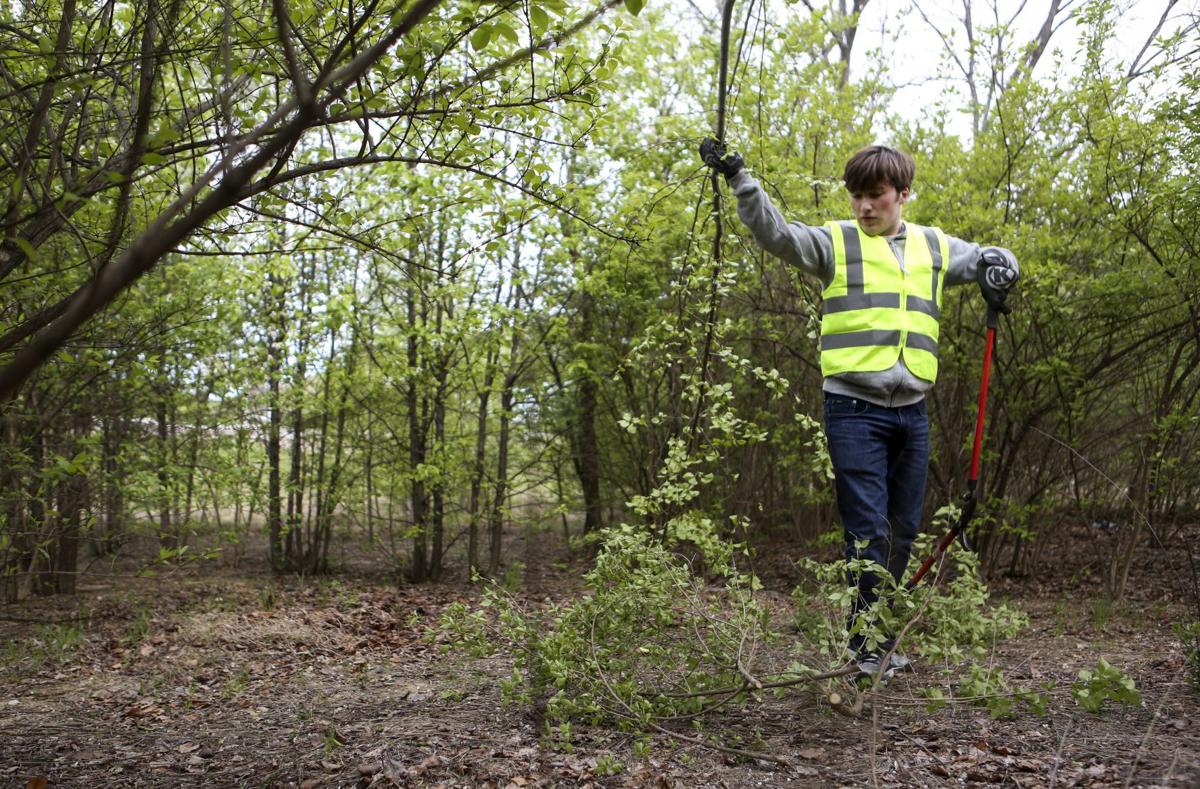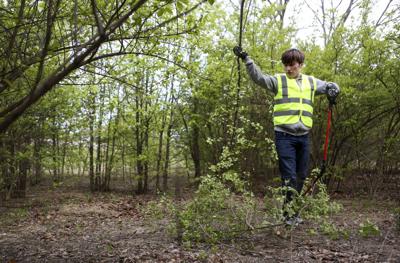JEFFERSON CITY ŌĆö Plant and tree nurseries in Missouri soon will be prohibited from selling a handful of fast-spreading invasive species.
Under a plan sent to the governor earlier this year by lawmakers, state-licensed nurseries would need to agree not to knowingly sell Callery pear ŌĆö commonly called Bradford pear (Pyrus calleryana) ŌĆö as well as burning bush (Euonymus alatus) beginning Jan. 1, 2029.
Sales of climbing euonymus (Euonymus fortunei), Japanese honeysuckle (Lonicera japonica), sericea lespedeza (Lespedeza cuneata) and perilla mint (Perilla frutescens) will be barred starting Jan. 1, 2027.
Nursery owners will be required to sign affidavits agreeing to the conditions as part of an annual registration-inspection certificate with the Department of Agriculture.
People are also reading…
Gov. Mike Kehoe signed the measure into law Monday.
A similar proposal was first introduced in 2024 and targeted five species. This yearŌĆÖs plan grew to limit perilla mint, which is toxic to cattle.
ŌĆ£They get into it, they eat it and they die,ŌĆØ said Shannon Cooper, lobbyist for the Missouri CattlemenŌĆÖs Association, during a legislative hearing earlier this year.
During debate in the House and Senate this spring, much of the discussion focused on the Bradford pear, which has gained a bad reputation for spreading fast and crowding out native plants.
Callery pear trees first arrived in the U.S. in the early 1900s to help fight a blight that was hurting the commercial pear industry.
In the 1950s, the U.S. Department of Agriculture developed the Callery as an ornamental tree, and after eight years of testing, the trees were for commercial sale in 1962.
The trees proved popular, growing on just about any type of land and blooming early in the spring. Plus, they are relatively cheap, grow quickly and begin blooming more quickly than native trees.
But by the 1990s, the reputation of this once-celebrated tree shifted.
It became clear the Bradford pears had what horticulturists call ŌĆ£weak crotches.ŌĆØ The structure of the tree, with all the limbs branching out from the trunk, may look symmetrical, but it often causes Bradford pears to split apart within 15 to 20 years.
And the trees often lose limbs during storms.
When Callery pear trees take over an area, their quick growth chokes out native trees. Plus, their early blooming shades out spring wildflowers and plants including milkweed, which attract insects such as Monarch butterflies.
The Missouri Department of Conservation says a single wild tree can turn into a dense thicket in several years.
Outside of KehoeŌĆÖs office, a stand of the pear trees could be removed as part of a major renovation of the capital complex.
The Missouri State Capitol Commission, which is in charge of the rehabilitation plan, is set to hear final proposals this month regarding the more than $500 million project.
ŌĆ£We anticipate that any plans to address trees or other ornamental vegetation will need to happen after that to align with any upcoming construction needs or changes. The intent will always be to align what works best for the intended purpose of the landscape while prioritizing native species and ones that best represent the great state of Missouri,ŌĆØ Office of Administration spokesman Shayne Martin said Monday.
The new law is only one way Missourians are trying to address the spread of invasive plant species.
Conservation groups have previously offered Callery pear buyback programs. Participants who cut down their Callery pears, for example, can qualify for a native tree.
The legislation is Sena.
Post-Dispatch photographers capture tens of thousands of images every year. See some of their best work that was either taken in June 2025 in this video. Edited by Jenna Jones.













